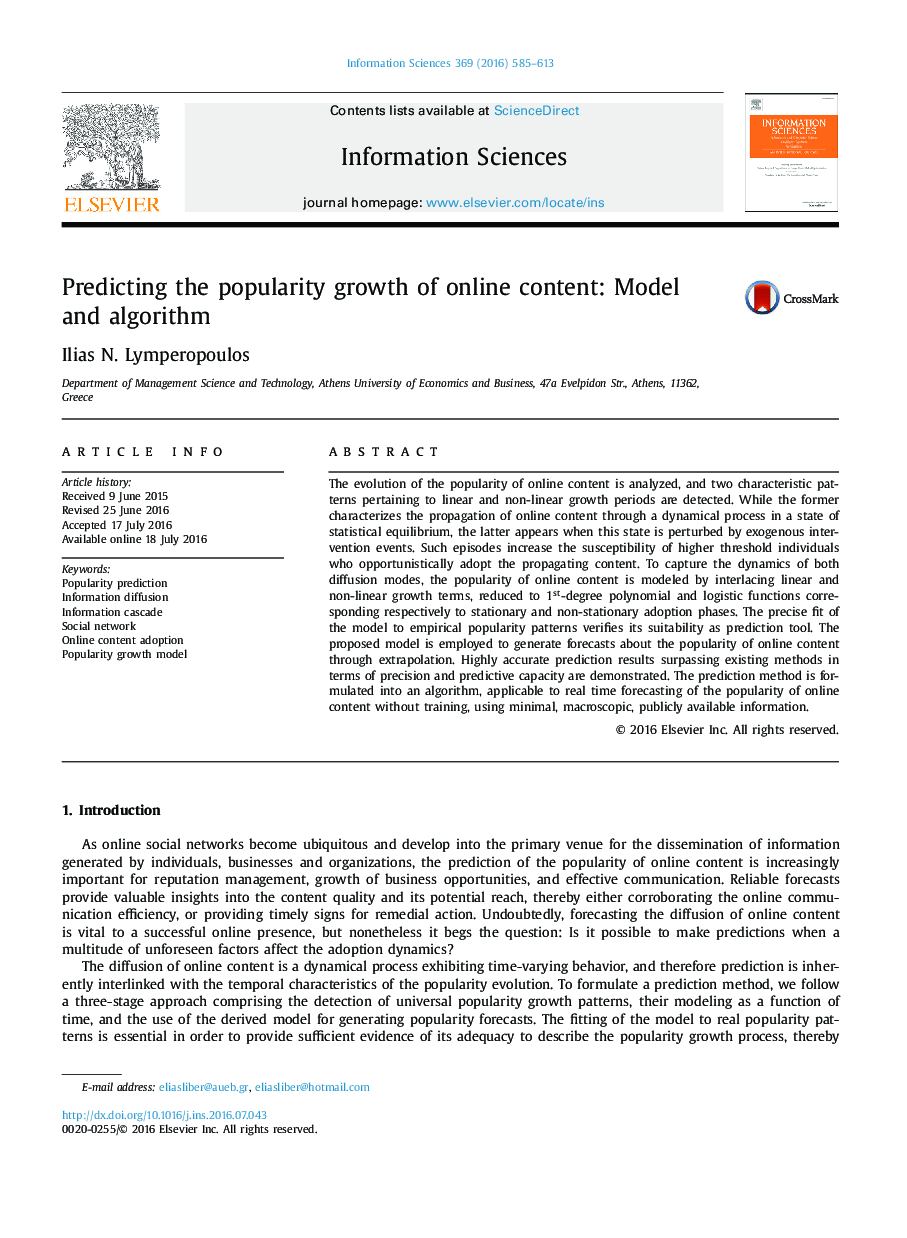| Article ID | Journal | Published Year | Pages | File Type |
|---|---|---|---|---|
| 4945010 | Information Sciences | 2016 | 29 Pages |
Abstract
The evolution of the popularity of online content is analyzed, and two characteristic patterns pertaining to linear and non-linear growth periods are detected. While the former characterizes the propagation of online content through a dynamical process in a state of statistical equilibrium, the latter appears when this state is perturbed by exogenous intervention events. Such episodes increase the susceptibility of higher threshold individuals who opportunistically adopt the propagating content. To capture the dynamics of both diffusion modes, the popularity of online content is modeled by interlacing linear and non-linear growth terms, reduced to 1st-degree polynomial and logistic functions corresponding respectively to stationary and non-stationary adoption phases. The precise fit of the model to empirical popularity patterns verifies its suitability as prediction tool. The proposed model is employed to generate forecasts about the popularity of online content through extrapolation. Highly accurate prediction results surpassing existing methods in terms of precision and predictive capacity are demonstrated. The prediction method is formulated into an algorithm, applicable to real time forecasting of the popularity of online content without training, using minimal, macroscopic, publicly available information.
Related Topics
Physical Sciences and Engineering
Computer Science
Artificial Intelligence
Authors
Ilias N. Lymperopoulos,
